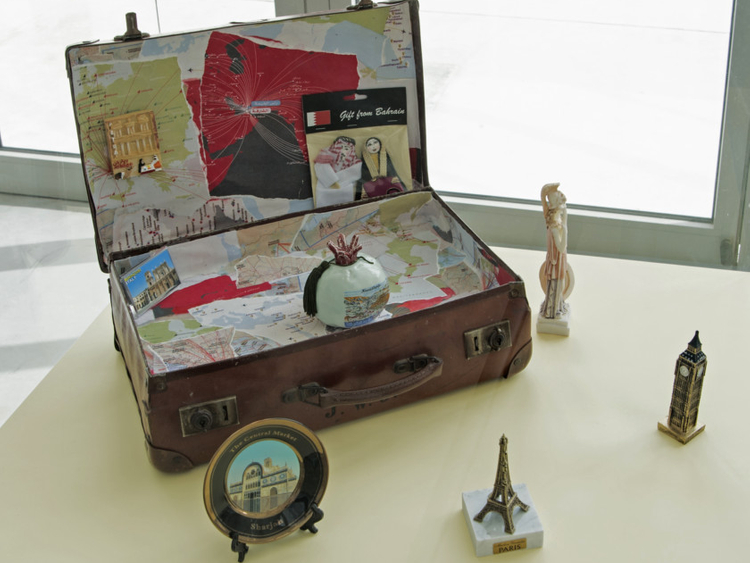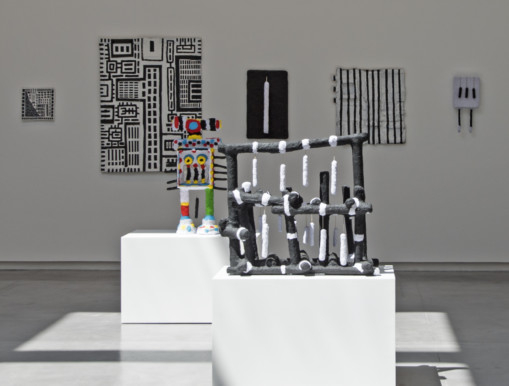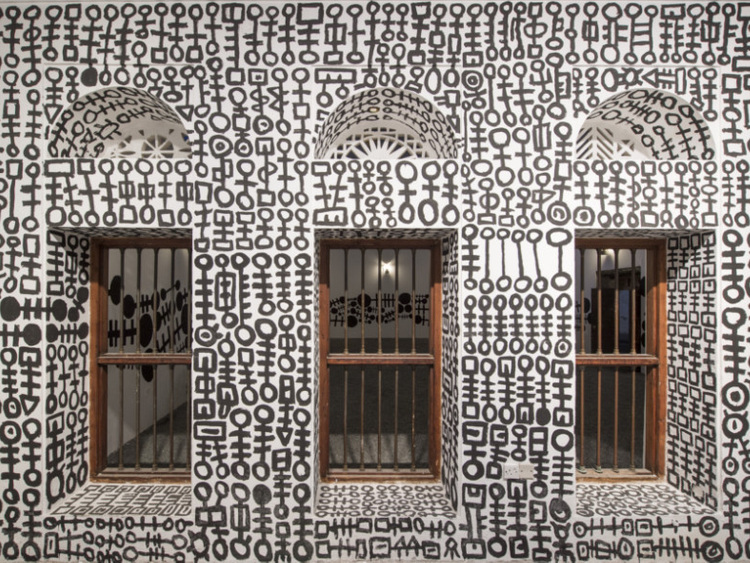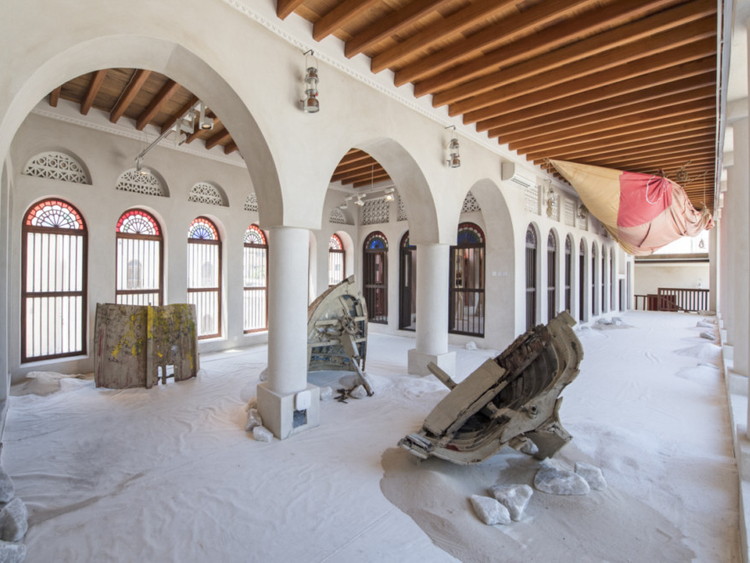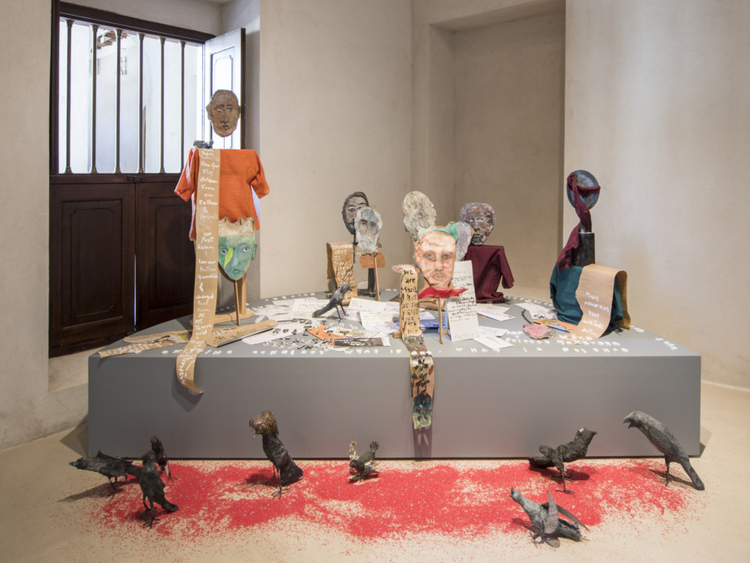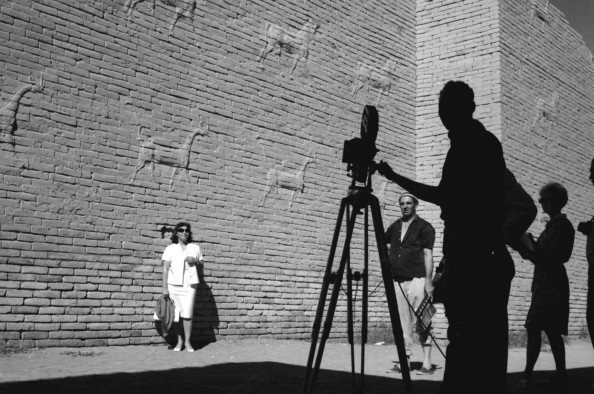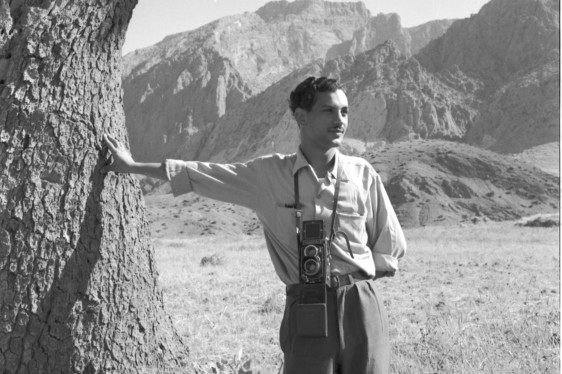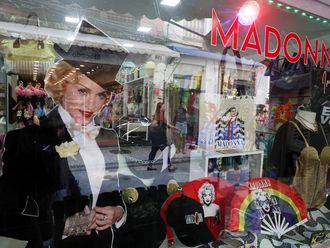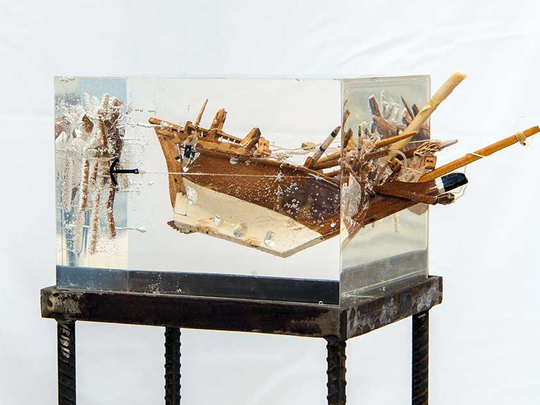
It has been a labour of love at the Sharjah Art Foundation and especially so for this year’s Spring 2018 programme, staging omprehensive, career-spanning surveys presenting the works of Latif Al Ani, Anna Boghiguian, Mohamed Ahmed Ibrahim and Zineb Sedira.
According to Hoor Al Qasimi, Director of Sharjah Art Foundation, the spring exhibitions “spotlight artists from across our region who have made pioneering contributions to contemporary art and whose practices address a broad range of timely concerns. Through these solo presentations, we aim to provide new insights on their practices and on the issues that have influenced contemporary art practitioners for decades.”
Here’s what to expect from these exhibitions:
Latif Al Ani: Through the Lens 1953–1979
This exhibition is the first representation of the famed Iraqi photographer Latif Al Ani, who was one of the first to capture cosmopolitan life in Iraq from the 1950s through the 1970s, and who has given us the most defining images of his country
Born in 1932 in Karbala, Al Ani’s early interest in photography led to a training stint with a local photographer. “Passion for finding beauty in a landscape, building or a labourer,” was what motivated him and sustained him through three decades of painstaking work. “My concern was the beauty of the image, not the politics. This was my creed,” he is quoted as saying.
The Sharjah show at the Gallery 4, Al Mureijah Square, spans these three pivotal decades and traces the progression of his life — both in Iraq and throughout his travels. The exhibition includes photographs taken while Al Ani worked for the Arabic-language magazine Ahl Al Naft [People of Oil], part of the photography unit in the Iraq Petroleum Company (IPC), and during the period he served as head of the photography department at the Iraq Ministry of Culture and head of the Iraqi News Agency.
His photographs represent a unique visual record of the country’s complex culture, politics and industry during a period in which everyday life was increasingly influenced by urbanisation. His portrait of a woman holding a sheaf of wheat became one of Al Ani’s most widely reproduced images, later appearing on the Iraqi 25,000 dinar note.
He recalls the time spent capturing the social life of labourers: “Their simple lives had great beauty.”
Other subjects featured in the exhibition range from portraits of friends and family to landscapes, ancient ruins, architecture and still life.
This is borne out by more than 50 photographs carefully selected by the curator Hoor Al Qasimi for the show and viewers are sure to take away lasting impressions of the great humanity, beauty and greatness of Iraq before the tragedies that befell the country, tearing apart lives as well as the fabric of the country.
Al Ani was conscious of the need to “record these events, places and people for the next generation. I thought they need their history now.”
He stopped working in the late 1970s prior to the outbreak of the Iran-Iraq war.
Anna Boghiguian
This first retrospective of Anna Boghiguian covers four decades of the artist’s works comprising books, drawings, paintings, photographs and sculptures as well as large-scale installations.
One can also have a peek at the artist’s Cairo studio, recreated here at the Bait Al Serkal, Arts Square.
The Sharjah presentation of this travelling exhibition is co-curated by Al Qasimi and Carolyn Christov-Bakargiev, Director of Castello di Rivoli Museo d’Arte Contemporanea, Rivoli-Torino, and is organised by the Turin musem in conjunction with Sharjah Art Foundation.
“Boghiguian’s work transcends languages, borders and cultural barriers. A product of a multicultural background herself, Boghiguian is a traveller and social observer. In combining her personal narrative with global contemporary concerns such as migration and diaspora, she creates a world that fuses poetry, politics and passion together,” says Al Qasimi.
Born in 1946 to an Egyptian-Armenian family, Boghiguian is currently based in Cairo but has been continually travelling to other destinations around the world such as Canada, France, India and Italy, becoming a consummate chronicler of modern metropolitan life, creating dense compositions — whether two-dimensional pieces or room-size installations — that combine diverse materials including wax, wood, paint, cut-outs and collage.
The exhibition features six large bodies of work: her multimedia installations The Salt Traders (2015), A Play to Play (2013) based on the work and philosophy of Rabindranath Tagore which inspired the decolonisation movement at many places in the world and Unfinished Symphony (2011–2012); the drawing series A Poet on the Edge of History (Constantine Cavafy) (1995–2017); a large selection of illustrated notebooks (1981–present) and a recreation of the artist’s studio in Cairo.
These series are informed by the lives of prominent historical figures, namely, poets and intellectuals.
“These works remind us of the enduring presence of past ideas, cultures and ways of living that shape our world,” says Al Qasimi.
“One of the things I like about her work is that for each project she will invent a technique. Her work speaks about historical recurrences, history not as a teleological event but as a circular phenomenon. And she is an optimist. If we can train the brain, she believes we can build a better world,” says Carolyn Christov-Bakargiev.
Mohamed Ahmed Ibrahim: Elements
A pioneer in conceptual art and principal contributor to the development of contemporary art in the UAE, Khorfakkan-based Mohamed Ahmed Ibrahim is also one of the leading proponents of land art.
Working with natural materials, he is inspired by primitive symbols derived from psychological concepts. Born in 1962 and with a degree in psychology from Al Ain University, Ibrahim has been inspired by his lifelong relationship with the environment of Khorfakkan, his hometown in the UAE that is surrounded by the Gulf of Oman on one side and the Hajar Mountains on the other.
His work often utilises organic material or form. Through paintings, drawings, sculptures, installations and documentation, the exhibition will trace the development of Ibrahim’s practice and its enduring influence on contemporary art in the UAE.
Curated by Hoor Al Qasimi, Mohamed Ahmed Ibrahim: Elements spans over three decades of the Emirati artist’s practice and includes paintings, drawings, sculptures and installations as well as two new site-specific commissions at the Gallery 3, Al Mureijah Square.
“We are delighted that Sharjah Art Foundation is presenting Mohamed Ahmed Ibrahim’s first major solo exhibition,” said Al Qasimi. “As one of the UAE’s pioneering conceptual artists, Ibrahim has developed a contemporary visual language where the primordial and the subconscious intersect. For over three decades his work has addressed the alarming effects of urban development on the natural environment, raising critical issues that affect us all.”
Encompassing the various forms in which Ibrahim works, this survey traces the aesthetic and conceptual concerns that run throughout the artist’s practice, such as his use of permutations and his disquiet about the demise of nature that accompanies urban development. His preoccupation with nature can also be seen in the materials he employs, such as hay, plastic bottles, mud and other natural and domestic elements.
Some of these sculptures are colourful and highly tactile.
The viewer will be surprised as the two-dimensional lines, markings, symbols and shapes take on a new life in the hands of Ibrahim and transform themselves into cascading structures, or take on a life form or into an autonomous mode as in the Robot series.
The artist’s two new site-specific installations in Sharjah Art Foundation’s Bait Makrani and Bait Al Hurma expand on Ibrahim’s meditative practice of repetitively drawing symbols and lines. The artist sees the symbols he creates as a language for himself–one that comments on the psychology and subconscious of people and the mundane actions they perform.
In Bait Al Hurma, Ibrahim has wrapped the interior and exterior of the building with his symbols as an act of meditation, thereby intertwining a new form of language with the history of the space.
In Bait Makrani, he moves away from his use of paper, cardboard, canvas or clay and shifts to a larger intervention within the building. He uses coal to draw a line on the floor and wraps plants with cloth to reiterate the intersection between the demise of nature and the rise of urban development.
Speaking about his art, the artist recalls that he started his journey into art by exploring shapes in the 1980s. “We tend to ignore shapes, and I want to accentuate and highlight them,” he says.
The symbols, on the other hand, add “depth to your environment.”
The engagement with the natural environment around him is like a monologue or constant internal conversation. This respect for the natural environment can be seen in all his works.
“Inspiration always comes from things that nature creates, and the artist can only care about and be in harmony with the spirit of the site by empathising with a branch of a tree, a stone or anything else that can lead to the application and confirmation of this idea of harmony,” Ibrahim writes in the artist’s statement.
For Ibrahim, more than the final work it is the artistic process and production itself that he likes to highlight.
Zineb Sedira: Air Affairs and Maritime NonSense
Zineb Sedira (b. 1963, Paris) is recognised internationally for her explorations of family, tradition, oral history, migration and the intergenerational transmission of knowledge. With works ranging from videos to photography, sculpture and installations, Sedira often explores the issues of gender, language, national identity and migration in an autobiographical context. Her reflective, carefully crafted presentations foster dialogue around the themes of her work.
Spanning two decades of her practice, Zineb Sedira: Air Affairs and Maritime NonSense features both well-known and rarely seen works as well as two new works commissioned especially for this exhibition. The major survey exhibition spans Galleries 1, 2, and 5, Al Mureijah Square, Sharjah.
Curated by Hoor Al Qasimi, the exhibition will include Sedira’s best-known works such as Image Keepers (2010), The End of the Road (2010) and Saphir (2006), as well as Mother Tongue (2002), which portrays the struggle to find a common language among three generations of women raised in Algeria, France and the United Kingdom.
The two new commissions, titled Sunken Stories and Air Affairs, engage with geopolitical histories of the recent past.
“We have followed Zineb’s work since her first presentation nearly 11 years ago as part of Sharjah Biennial 6 in 2003, then later in the 2007 Sharjah Biennial 8,” said Hoor Al Qasimi. “With this exhibition we are able to explore, in depth, the issues of migration, identity and borders that not only continue to inform her work but also reflect the inescapable realities of life for so many people around the world today.”
Mother Tongue (2002) portrays the struggle to find a common language in which to share knowledge and experience across time and space. Saphir (2006) explores the notion of return, and the multichannel video Image Keepers (2010) revolves around Sedira’s conversations with the widow of a prominent photographer who devoted himself to documenting the Algerian revolution. The exhibition also includes rarely seen videos, such as The End of the Road (2010).
The photographic series, installations and sculptures on Sugar Silos, Sugar Routes and Sugar Surface trace the movement of sugar from locations across the world to the Port of Marseille. In the sugar silos and warehouses the giant heaps of sugar become a new kind of landscape. The sugar is packaged as a global commodity, it local identity lost somewhere along the trade routes.
In her installation Sunken Stories, Sedira focuses on the wooden dhows that have long facilitated trade to and from the Arabian Gulf as she ponders how places are shaped by the movement of people, goods and culture across the sea.
In Air Affairs, Sedira contemplates the Emirate of Sharjah through its historic British Imperial Airways (BIA) airport. She retraces the BIA route from London to Sharjah to Karachi and creates a travelogue informed by her journey.
Laughter in Hell is an expansion of her long-running interest in traditions of oral history and more profoundly, the performative transmission of knowledge across generations.
Examining the dark humour that emerged during Algeria’s ‘black decade’ (1991–2001), a period of internal war resulting in the deaths of an estimated 200,000 people, this work considers how joke telling can become a way for trauma to be emotionally assimilated within society. In the face of ever-present violence, laughter becomes a political, spiritual and palliative practice of resistance.
NP Krishna Kumar is a writer based in Dubai.
The spring exhibitions at Sharjah Art Foundation will close on June 16. All the exhibitions at SAF are free and open to the public.



